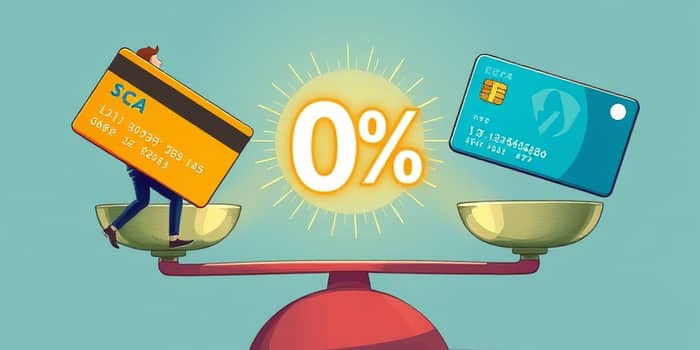
Unlock the secrets to slashing your debt with strategic moves and expert insights. Discover how top cards can help you win the battle against high-interest balances.
A balance transfer credit card lets you move an existing debt from one or more accounts to a new card with a lower interest rate. It’s a common tool for consolidating high-interest debt and regaining control of your finances.
Users benefit from an extended promotional period where interest pauses, allowing every dollar you pay to chip away at the principal, not the interest.
Many top cards now offer an introductory 0% APR on balance transfers for 0% interest on balance transfers, typically ranging from 12 to 21 months. Some also extend this period to new purchases.
For example, the Citi® Diamond Preferred® Card provides a 21-month 0% intro APR on transfers. During this window, you can make meaningful progress on paying off debt without accumulating new interest charges.
These offers can transform your repayment strategy by reallocating interest savings directly against your balance.
Balance transfer fees typically range from 3% to 5% of the amount moved, with a minimum fee of $5 or $10. On a $5,000 transfer, a 3% fee is $150, while 5% is $250.
Recent data shows 44% of top offers charge 4–5% fees, up from 28% three years ago, and 51% charge a 3% fee. Fees are rising, making fee comparison even more important before deciding.
The leading cards of 2025 balance lengthy interest-free periods with no annual fees, maximizing your savings potential.
Finding no-fee options is rare; most require qualifying with excellent credit scores and strict application timelines.
Approval for the best 0% APR deals usually demands strong credit, and your new card’s transfer limit may be lower than the total credit line. Many cards also require transfers within the first four months of account opening to qualify for zero interest.
Each transfer incurs its own fee, so consolidating multiple debts on one card can be cost-effective only if your limit accommodates all balances.
To justify the upfront fee, estimate your interest savings. At 20% APR on a $5,000 balance, you’d pay over $1,000 in interest within a year. A one-time 3–5% fee is a fraction of that cost. Pay diligently during the intro period, roughly $250 monthly for 21 months, and you’ll emerge debt-free.
Always compare fee structures against the length of the 0% period. Prioritizing a slightly shorter intro term with lower fees may yield greater overall savings than chasing the longest zero-interest offer.
Review annual fees, ongoing APR after the promotional period (often 17%–29%), and transfer deadlines. Avoid transferring balances from cards issued by the same bank, as these often aren’t permitted.
Balance transfer credit cards with a 0% APR promotion offer all payments reduce the principal, freeing you from the burden of interest. While fees are rising, careful comparison of terms, limits, and timelines can unlock significant savings.
With disciplined budgeting and strategic planning, you can harness the 0% APR magic to regain financial freedom and stride confidently toward a debt-free future.
References













